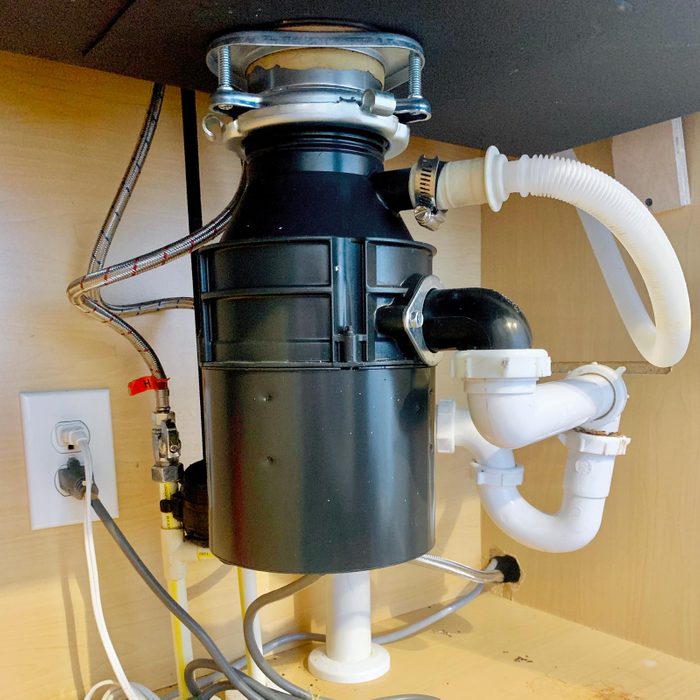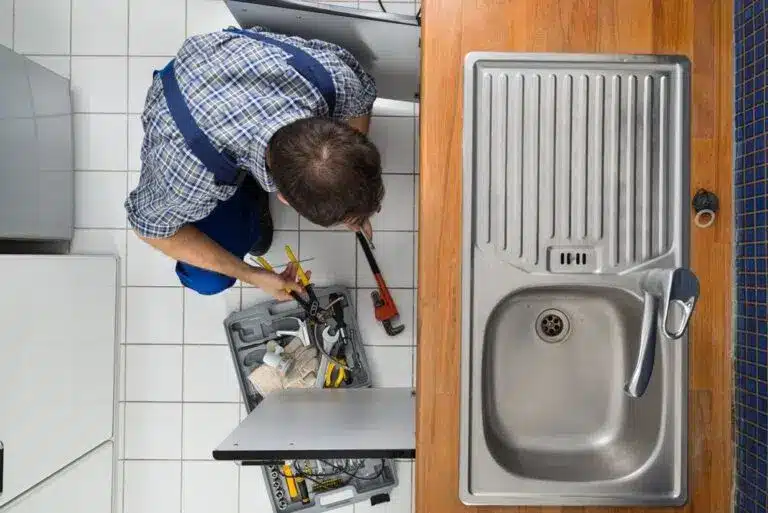Quick Fixes for a Dripping Garbage Disposal
Quick Fixes for a Dripping Garbage Disposal
Blog Article
Almost everyone maintains their own unique opinion involving Why Is .

Garbage disposals are essential kitchen home appliances that aid in disposing of food waste efficiently. Nonetheless, a dripping waste disposal unit can be a discouraging and untidy problem to deal with. The good news is, lots of leaks can be dealt with quickly with a few straightforward steps. In this post, we will go over how to deal with a leaking waste disposal unit effectively.
Intro
Garbage disposals are mounted under kitchen area sinks and are made to shred food waste into smaller items, allowing it to go through the pipes system conveniently. While these devices are usually reputable, leakages can take place with time due to deterioration, loosened links, or damages to the unit.
Common Causes of Leaks in Trash Disposals
Worn Seals and Gaskets
Seals and gaskets play an important function in stopping water from leaking out of the garbage disposal. Gradually, these elements can weaken, bring about leakages around the disposal unit.
Loose Links
The links in between the waste disposal unit and the plumbing system can come to be loosened gradually, triggering water to leak out during operation.
Splits or Holes in the Disposal Unit
Physical damages to the waste disposal unit, such as splits or holes in the real estate, can likewise result in leakages.
Identifying the Resource of the Leakage
Before trying to repair a dripping waste disposal unit, it is necessary to recognize the source of the leak. This can generally be done with aesthetic inspection or by carrying out basic examinations.
Visual Evaluation
Evaluate the garbage disposal unit thoroughly for any type of indicators of water leak. Pay close attention to areas around seals, gaskets, and link factors.
Examining for Leakages
One means to check for leakages is by running water via the disposal device and looking for any type of noticeable indicators of leak.
Tools and Materials Needed for Fixing a Dripping Waste Disposal Unit
Before beginning the repair procedure, collect the needed devices and products, consisting of a screwdriver, adjustable wrench, plumber's putty, substitute seals or gaskets, and epoxy or patching material for fixing splits or openings.
Step-by-Step Guide to Repairing a Dripping Garbage Disposal
Switch off the Power
Before attempting any kind of fixings, make certain that the power to the garbage disposal unit is turned off to stop the risk of electrical shock.
Situate the Leak
Determine the specific place of the leakage and determine the cause.
Tighten up Links
Make use of a wrench to tighten any loose connections in between the disposal device and the pipes system.
Replace Seals or Gaskets
If the leak is due to worn seals or gaskets, remove the old components and replace them with new ones.
Patching Fractures or Holes
For cracks or openings in the disposal device, usage epoxy or an ideal patching product to seal the damaged location.
Checking the Waste Disposal Unit After Repair Work
Once the repair is full, examine the waste disposal unit by running water through it to ensure that the leakage has actually been dealt with.
Preventive Maintenance Tips to Avoid Future Leakages
To stop future leaks, it is vital to do routine maintenance on your garbage disposal. This consists of keeping it clean, staying clear of putting non-food items or tough objects down the disposal, and periodically checking for leaks or other concerns.
Verdict
To conclude, repairing a dripping waste disposal unit is a relatively simple process that can be completed with standard tools and products. By following the steps detailed in this article and practicing preventative maintenance, you can keep your waste disposal unit in good working problem and avoid expensive fixings in the future.
HERE’S HOW TO FIX YOUR GARBAGE DISPOSAL
WHAT TO DO IF SOMETHING IS STUCK IN YOUR GARBAGE DISPOSAL
If the impeller won’t turn, there’s probably something stuck in the disposal. It could be a steak bone or peach pit, although plumbers report pulling all sorts of inappropriate objects out of disposals, such as bottle caps or aluminum foil. Make sure power to the disposal is off, and look inside to see if you can see the source of the jam.
Never stick your fingers in a disposal. Pull out anything you see with tongs or pliers.
If the disposal still won’t work, it may be time to call a plumber or consider buying a new disposal. GEM Plumbing & Heating is here for all of your garbage disposal needs.
WHAT TO DO IF YOUR GARBAGE DISPOSAL DRAIN IS CLOGGED
Take everything out from underneath your sink and put a bucket or other container under your disposal to catch any water that drains out. Disconnect your disposal from the power supply. If it’s plugged into a wall outlet, unplug it. If it’s hardwired into an electrical box, go to the electrical panel and turn off the breaker for the disposal. Pour ¼ cup of baking soda into the drain, followed by ½ cup of white vinegar. Give the solution a few minutes to fizz and do its work. Look into the disposal with a flashlight to see if you can see an object that might be causing the clog. If you see it, remove it using tongs or pliers. MORE TIPS ON DEALING WITH A CLOGGED GARBAGE DISPOSAL
Never use drain cleaner in a garbage disposal. It can damage the plastic parts inside the disposal. You can also be splashed with the caustic liquid while working to clear the clog. Beware! Never stick your fingers into a garbage disposal. Trust us — not a good idea. In many instances, your dishwasher drains through your garbage disposal. This allows the disposal to grind any large food particles that may be drained out of your dishwasher. There are some jurisdictions, however, where the plumbing code prohibits such a connection. WHAT TO DO WHEN YOUR DISHWASHER DRAINS THROUGH THE DISPOSAL
Run some water in the sink so your plunger has at least a ½-inch of water to create a seal and plunge vigorously up and down several times. You may need to repeat this several times. Run hot water down the drain to clear any residue that remains.

We had been made aware of that article about Why Is from an acquaintance on our other website. Are you aware of somebody else who is fascinated about the subject? Be sure promote it. Thank you for your time invested reading it.
Book A Free Estimate Report this page